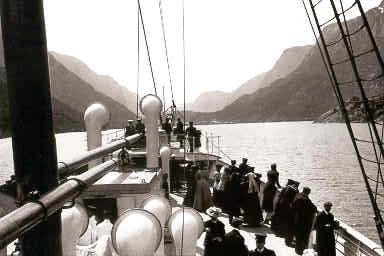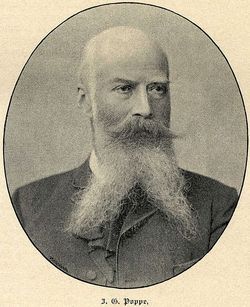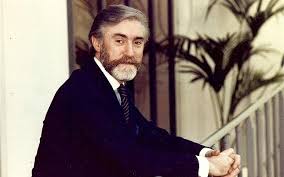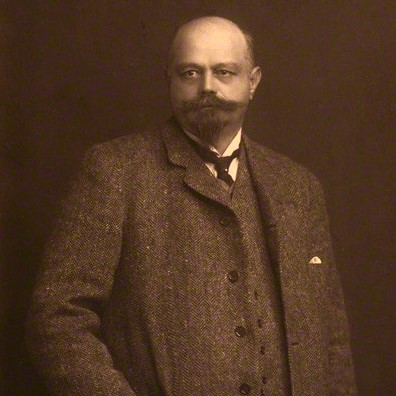All text and photographs (unless stated otherwise) © Paul Timmerman
Passenger shipping in the first half of the 19th century was limited to liner service mainly from Europe to the U.S. and to the Far East. The first notable passenger line was thee British Cunard Line which started a regular service from the UK to New York in 1840 with their paddle steamer Britannia. At first only mail was transported, but later also passengers were ferried across.
Alas, this happened in dreadful circumstances, before 1850, steerage passengers – mostly emigrants looking for a better life across the Atlantic – didn’t have proper meals, no beds, no toilets and almost no deck space for fresh air.
However, the most important shipping lines saw that emigrants in particular were their main source of income so in the second half of the 19th century living conditions onboard passenger ships slowly started to improve.
At the time passenger shipping was, apart from a few isolated especially organised so called excursion trips, limited to liner service with vessels catering mainly for steerage passengers in simple surroundings and for the happy few, the rich, who could afford to travel first class in more luxourious quarters.

A first attempt to organise a cruise dates back from 1835 when the chief editor of the Shetland Journal wrote an article “To Tourists” in which he proposed to organise cruises to Iceland, the Faroer Islands in summer and to Spain in winter.
And in 1840 the British P&O Line operates an excursion trip to the Mediterranean for just 40 passengers, amongst them the writer William Makepeace Thackeray who writes about te adventure a cruise still is in these days.
Some years later in 1845 in the Leipziger Illustrierte Zeitung the following advertisement appeared: “An Opportunity For Taking Part in a Voyage Around the World¨. Meanwhile, a Mr. Sloman, ship owner in Hamburg had plans to use one of his sailing vessels for a world cruise.
However, it was not before 1867 that the paddle wheeler Quaker City (1800 tons) undertook what is regarded to be the first cruise from New York to Europe and the Holy Land. One of the passengers on board was Mark Twain, whose book (1869, The Innocents Abroad) provides us with a detailed account of the voyage.

Thomas Cooke (whose travel agency existed until 2019!) organised his first cruise in 1875 to the North Cape with the steamer President Christie which departed with 21 passengers onboard for this trip.
Then, in 1881 the Peninsular & Oriental Steam Navigating Company, P&O in short, converted their liner Ceylon after 20 years in liner-service to a cruise ship, a daring experiment in those days. Ceylon is regarded as the first cruise ship in history, and consequently, P&O consider themselves the inventors of cruising . Up till now, ship owners had used liners for off season cruising when passenger loads in liner service were low. Full time cruise ships did not exist before Ceylon.
Two other remarkable cruise ships ships in this early period of cruising history were the St. Rognvald and St. Sunniva of the North Company, who had decided to try their luck organising short cruises from Leith or Aberdeen to the Orkney and Shetland Islands and later to Norway. In 1886 their St. Rognvald sailed with 90 passengers to Norway. St. Rognvald was a small ship of 984-tons and 73 m long. It proved to be a success and soon more short cruises were scheduled. North Line immediately started planning a new vessel, resembling a yacht which would be named St. Sunniva. The vessel had to be ready for the 1876 season. St. Rognvald originally had been a liner with cargo spaces that had been forced into cruising whilst St. Sunniva would be a pure passenger carrying cruise vessel. North Line would be successful with these ships until the end of the 19th century.

There are some more examples of early cruising:
- in the 1880’s and 90’s several British and Norwegian owners offered short trips to the Norwegian fjords (among these being two of the companies that today form the famous Norwegian coastal express service Hurtigruten, Det Bergenske and Det Nordenfjeldske),
- the Ohio (American Steam Ship Cy) and theTyburnia, (Pleasure Cruising Yacht Cy) both cruised to the West Indies during the 1880s,
- Orient Line’s Chimbarazo and Garonne were taken from their London – Australia route and switched to cruising in 1889, sailing to European ports and the West Indies,
- in 1895 Lusitania and La Touraine, owned by Orient Line and French Line respectively, undertook cruises to sunny destinations such as the Canary Islands, the Azores and the Mediterranean.
- in 1899 the American Line was feeling the slump in North Atlantic passengers. They decided to send the ss Paris former (USS Yale) on a West Indies cruise to visit the battle sites of the Spanish American War. The voyage took three weeks and turned out to be a great succes. In later years, the company sent more of her ships cruising during the off season of the Atlantic trade.
Around the turn of the century several interesting events took the development of cruising a step further.
P&O converted their Rome (built 1881) to a cruise ship, renaming her Vectis. A ship of 5.545 tons, she started sailing in her new role in 1904, cruising to Norway. She carried a mere 150 passengers in luxury surroundings.
The Germans were not to be outdone however and North German Lloyd ‘s Kaiser Wilhelm II made a three week cruise from Bremerhaven to Norway in 1890, carrying 215 passengers. The cruise was a huge success.
January 22nd the next year, rival company HAPAG used their 7.661 ton Auguste Victoria for a 58-day round trip to the Mediterranean and the Middle East. Auguste Victoria did very well and HAPAG-Lloyd’s famous director Albert Ballin decided HAPAG had to have a full time purpose built cruise ship. Ballin told the German emperor Kaiser Wilhelm of his plans. The Kaiser, having a keen interest in shipping and an admirer of Ballin’s work, sent Ballin his comments and suggestions. Of course the Kaiser’s yacht Hohenzollern served as an example in this matter. Because of the immense success of the Auguste Victoria, Ballin also used her sisterships Columbia, Normannia and Furst Bismarck for cruising to meet demand.

Ballin used several of the Kaiser’s suggestions during the design phase of the new vessel. Prinzesse Victoria Louise was completed in 1900 and instantly became a stunning success. Alas, her career was all too short as she ran aground near Jamaica and became a total loss in 1906. But Ballin had proven his point, as his idea to organise cruises to create work for laid-up passenger ships in order to increase profits had been received rather sceptically also within his own company…..and now it proved successful. In the winter crossing the North-Atlantic with its series of gales and always rough seas was not very popular amongst travellers, so many liners were laid-up for the winter season.
Fortunately. HAPAG had a replacement for her, the Meteor, a cruise yacht of slightly smaller dimensions (3.600 tons and 220 passengers) built in 1904. She would sail for HAPAG until 1921 before being sold to the Norwegians.
In 1908 HAPAG’s rival, North German Lloyd sent their Grosser Kurfurst on a cruise to Norway and Spitsbergen. Although North German Lloyd organised severqal cruises they concentrated mainly on liner voyages all around the world.
To keep the Lloyd at a distance, HAPAG answers by having one of its fast express liners Deutschand rebuilt as the cruise ship Victoria Louise, fitted out in Jugendstil-style as opposed to the Rococo-style which was customary up till then.

In spite of a modest growth in the number of vessels sailing in cruise service, cruising in these days obviously remained second to line-voyages.
However, after the turn of the century, liners returning from New York and Canada to Europe were often half empty. So, gradually, these return trips were marketed as pleasure cruises although in fact they were pure line voyages. On board standards were improved, and liners were built with the emphasis on luxury rather than speed. All kinds of novelties were introduced: White Star Line’s Adriatic of 1907 introduced the first swimming pool on the high seas, while HAPAG Lloyd’s Amerika featured the first a la carte restaurant, the Ritz Carlton restaurant and the first electric passenger lifts on board a passenger vessel.
So, apart from a few full time cruise ships and occaisional liner voyages marketed as cruises, the cruise industry was still in its infancy. Mainly German HAPAG offered cruises year round on a larger scale.
In 1914, at the start of World War I, all efforts to get cruising of the ground came to an abrupt halt.




